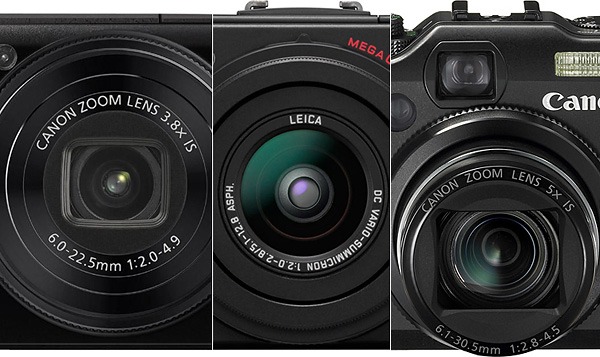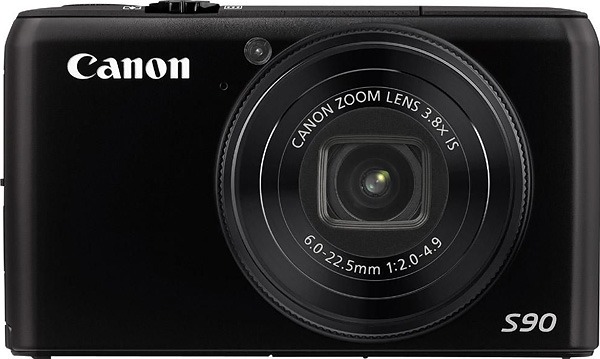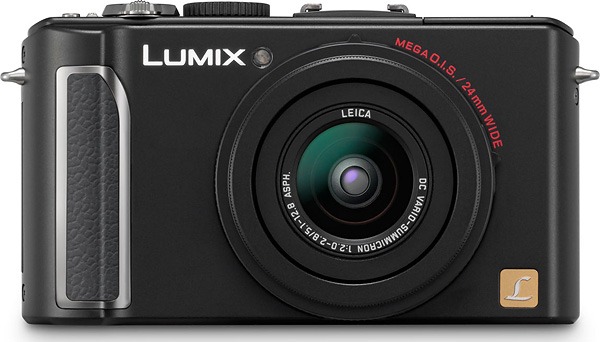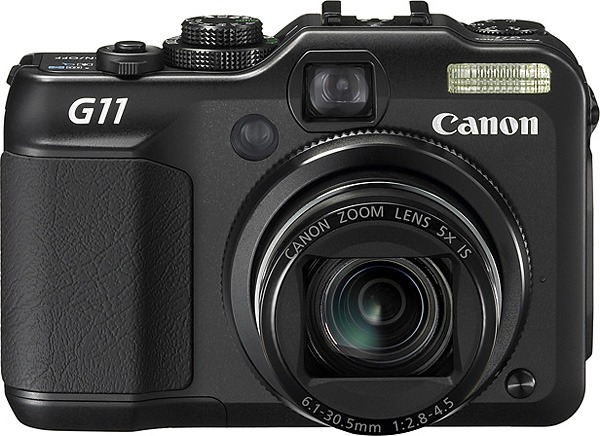
Everyone has to start somewhere, and countless music photographers working in the photo pits started out as fans in the crowd. Point & shoot cameras have the advantage of being compact, unobtrusive, and relatively inexpensive. Here's a look at three quality point and shoots for the budding live music photographer.
My current recommendations for P&S cameras for photographing live music are the three models aimed at the “serious compact” market segment:
All three of these models offer manual shooting, RAW, and excel in low light by offering some of the best high ISO performance available outside of DSLRs and mirrorless APS-sensor cameras.

This little camera packs a lot of features in a very small form factor, including a sensitivity range that goes up to “big-boy” territory of ISO 3200. The S90 offers very similar image quality to the flagship G11, all in a decidedly tiny package.
Unlike the Panasonic LX3, the lens on the S90 retracts to be essentially flush with the body, making this a great pocket cam. The movable dial around the lens serves as a manual control that can be set to control a range of settings – a very nice touch. Still, with the most compact body out of all the cameras I'm recommending here, the Canon S90 requires going into the menu more due to the limited real estate to dedicate to physical controls.
With a zoom range of 28-105mm (35mm equivalent), this camera is going to be best suited to stage-front photography.
- Pros: Very compact, manual controls, RAW, excellent high ISO performance for a compact
- Cons: Limited zoom range, slow lens, no hotshoe for external flash
- Price: $390

The Panasonic Lx3 is a gem of a camera, with a fast f/2-2.8 lens and excellent image quality for a point and shoot. For my shooting and needs, the very fast zoom and high ISO performance were what sold me on this camera.
The catch with the Panasonic LX3 is a limited zoom range of 24-60mm, which means that the L3x really requires a close position to the stage to make the most out of its zoom range. However, for anyone with a DSLR and a 24-70mm midrange zoom, you'll feel right at home.
With a 24mm focal length on the wide end, the LX3 features the best option for wide angle photography, which is perfect for smaller clubs and big stages alike – if you can get close enough.
Just like the S90, the LX3 shoots RAW offers full manual control, which I consider a must-have feature for concert photography.
As a bonus, the LX3 features a flash hotshoe, and since it uses an electronic shutter, it can flash sync at speeds several stops faster than your conventional DSLR. Very nice if you're using off-camera flash and want a “dark daylight” effect.
- Pros: Excellent image quality, manual controls, RAW, fast aperture, 24mm wide angle, HD (720) movie mode
- Cons: Limited zoom range, too big to be truly pocketable, external lens cap
- Price: $430

If the LX3 and S90 are compacts, the Canon G11 is distinctly more mid-sized, with a beefy and dense weight to it that just begs for serious consideration.
The G11 boasts very similar characteristics to the excellent image quality of the smaller S90, all while possessing dedicated manual controls and dials for ISO for great handling. At 28-140mm, the G11's lens features the longest range, albeit at a slower f/2.8-4.5 aperture – a stop slower than both the S90 and LX3 at the wide end.
The only real downside to this excellent camera is the large form factor – it's great for the feel in hand, but the Canon G11 may not fit the “small camera” allowance of most concerts.
- Pros: Excellent manual controls, high ISO performance
- Cons: Larger form factor may not be appreciated by security
- Price: $490
End Notes:
These days, most concerts allow fans to bring in “small cameras” with no restrictions. While these three point & shoot cameras don't truly begin to reach the image quality of even entry level DSLRs, they're some of the best options for anyone shooting from the crowd and clamoring for space at the barricade.
Next up, we'll look at entry-level DSLRs that are up to the rigors of live music photography. In the meantime, let me know if there are any other gear or concert photography features you would like to see.
Buy Yourself Something Nice
If you've found these recommendations useful, or anything else I share here at www.ishootshows.com, please consider using my affiliate links here or on my Music Photography Gear Guide via B&H for your next photography purchases.
You get some cool gear, and I can keep pouring cups of the oolong tea that fuels crazy DIY projects made out of kitchen supplies and helps me bring you music photography tutorials & daily concert write-ups.

